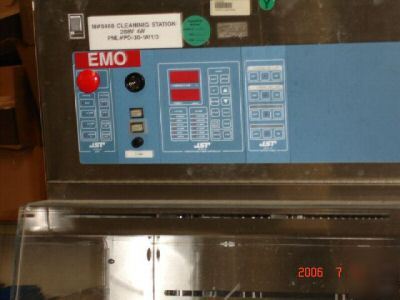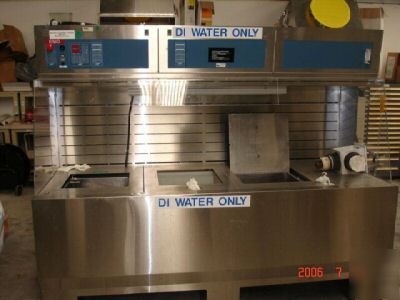

Select a state or visit the main Tiny House Communities page.Tiny House Kitchen Ideas and Inspiration.The steps outlined above may differ from your manufacturer’s procedure however, they are a good guide.


How to build a wet flow bench manual#
You must understand that for accurate calibration of any instrument including your DP transmitter, the manufacturer’s manual is the ultimate guide towards achieving a very good calibration. Once you are satisfied with the level of accuracy of the calibration result, you are done with the calibration of the DP transmitter otherwise you will have to continue fine tuning the calibration process until a reasonable accuracy is achieved. A correctly calibrated DP transmitter can be described as one where the % input equals the % output for all values between 0 and 100 percent. Next pressurize the high side of the DP transmitter to cause the pressure applied to the high side to increase to the 100 percent value ( URV) of the calibration range.Īdjust the SPAN screw while observing the meter’s current indication to cause the meter to indicate 20 mA, which is the 100% ( URV) output value signal for the DP transmitter.ġ00% input to the transmitter (pressure) exactly equals the transmitters 0 % through 100 % output (4 - 20 mA current). This may not be exactly 4mA but depending on your plant’s acceptable margin of error, you should get a value very close to 4mA. Next turn both screws 10 turns counter clockwise to approximately adjust the potentiometer to the mid resistance point (50%).Īpply the 0% ( LRV) pressure to the transmitter’s High side, and the transmitter’s low side vented so that there is no differential pressure acting across the transmitter’s DP cell.Īdjust the ZERO screw on the transmitter while observing the current meter to cause the indication to be 4m A, which is the transmitters LRV output. Turn the ZERO and SPAN screws both 20 turns clockwise. This back and forth adjustment of the ZERO and SPAN is what makes the DP transmitter calibration sometimes tedious. Specifically, changes made to the span adjustment almost always alter the DP transmitter’s ZERO point. That is, adjusting one has an effect on the other. Please note that for the analog DP transmitter, the ZERO and SPAN adjustments are interactive. The potentiometer has a maximum of 20 turns between minimum and maximum resistance therefore turning the ZERO or SPAN screws clockwise or counter-clockwise for 20 turns will cause the potentiometer to be at either maximum or minimum. That is the potentiometer is of a type that once fully adjusted clockwise or counter clockwise the screw may continue to turn without further varying the resistance for either direction. Note that these screws each connect to a variable resistance (potentiometer) and can be turned indefinitely. Locate the manufacturer’s instruction manual and with it locate the transmitters ZERO and SPAN adjustment screws sometimes called Zero and Range adjustment screws. For example, suppose a DP transmitter with output 4 – 20mA is to be used to measure pressure in the range 0 – 300 psig, then the transmitter zero percent ( LRV) is 4mA and will be calibrated to 0psig and the transmitter’s 100%, URV, which is 20mA will be calibrated to 300psig. Note that during the calibration process, the transmitter’s zero percent, ( LRV), is to be calibrated to the, LRV, of the calibration range and the transmitter’s span is to be calibrated to the, URV, of the calibration range. You are now ready to calibrate the DP transmitter. If you calibrate the DP transmitter before first testing and recording the as found data, the history of the device performance data will be lost All the reading obtained will be the as found readings. Continue pressurizing the transmitter and recording your readings for the five points (0%, 25%, 50%, 75% and 100% of input pressure). Record the current reading in (m A) which will be your first data point. So once your equipment is well setup, power it up and pressurize the high port of your DP transmitter. Whether you are doing a bench calibration or a field calibration, the low port of the DP transmitter cell is vented to the atmosphere(as shown in the connection diagram above) and the high port of the DP transmitter connected to a pressure source e.g a hand pump or any other suitable pressure source in a bench calibration or the actual process pressure through a pressure regulator and a pneumatic calibrator in a field calibration. In most calibration done, you will be doing either a bench(shop) calibration – A bench calibration is a procedure where the device is calibrated at a calibration bench using calibration devices to simulate the process, – or a field calibration where the actual process is used. Readings are taken for both increasing and decreasing input values and the corresponding transmitter output values are recorded


 0 kommentar(er)
0 kommentar(er)
